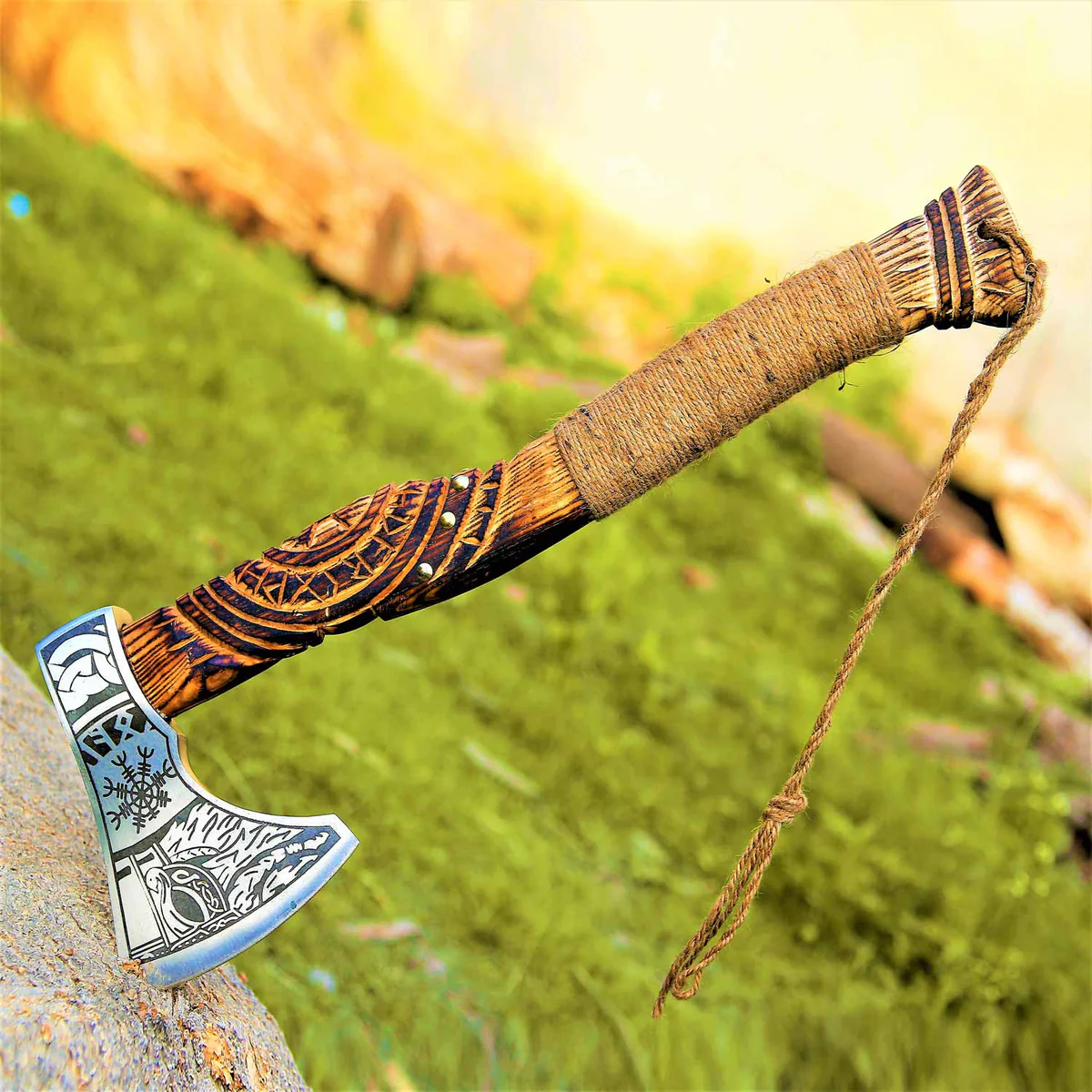
1. Presentation
Viking axes are something other than instruments; they are an image of a rich social legacy that traces all the way back to the Viking Age. These tomahawks were fundamental for endurance, filling numerous needs from felling trees to battle. As of late, there has been a developing interest in top-notch, high-quality Viking tomahawks, interesting to gatherers, history fans, and open-air explorers the same. This article dives into the meaning of these tomahawks, the craftsmanship associated with their creation, and where to find the most ideal choices ready to move.
2. The Authentic Meaning of Viking Tomahawks
2.1 The Job of Tomahawks in Viking Society
In Viking society, tomahawks were crucial devices. They were utilized for various undertakings, including carpentry, hunting, and fighting. The hatchet was a flexible instrument that could be employed successfully in fights, making it a leaning weapon among Viking champions. The plan of the hatchet frequently mirrored the situation with its proprietor, with additional intricate plans showing higher social standing.
2.2 Advancement of Hatchet Plan
The plan of Viking tomahawks developed over the long run, impacted by different factors like topography, accessible materials, and innovative headways. Early Viking tomahawks were ordinarily basic in plan, highlighting a straight cutting edge and a wooden handle. Over the natural course of time, more modern plans arose, including the famous unshaven hatchet, which considered more noteworthy control and flexibility in battle.
3. Craftsmanship of High-Quality Viking Tomahawks
3.1 Materials Utilized in Development
Top-notch, high-quality Viking tomahawks are created from premium materials. The sharp edge is frequently produced using high-carbon steel, which gives fantastic edge maintenance and solidness. The handle is normally built from hardwoods like hickory or debris, known for their solidarity and shock-retaining properties. The selection of materials is significant, as it straightforwardly influences the hatchet’s presentation and life span.
3.2 Conventional Blacksmithing Strategies
The specialty of blacksmithing has been passed down through the ages; numerous cutting-edge craftsmen still utilize customary procedures to make carefully assembled Viking tomahawks. This cycle frequently includes warming the metal in a fashion, molding it with mallets, and extinguishing it in oil or water to solidify the cutting edge. Each hatchet is made with fastidious meticulousness, guaranteeing that it satisfies the most elevated guidelines of value.
3.3 Current Advancements in Hatchet Making
While conventional strategies are profoundly esteemed, present-day advancements have additionally advanced into the hatchet-making process. A few craftsmen integrate progressed methods; for example, PC-aided planning (computer-aided design) to make exact estimations and plans. Also, current intensity therapy cycles can upgrade the toughness and execution of the hatchet, making them considerably more solid for contemporary use.
4. Elements of Top-notch Handcrafted Viking Tomahawks
4.1 Sharp edge Plan and Usefulness
The sharp edge plan of a Viking hatchet is urgent for its usefulness. Top-notch tomahawks frequently include an even sharp edge that considers productive cleaving and tossing. The state of the cutting edge can change, with some intended for explicit undertakings, for example, felling trees or participating in battle. A very much created cutting edge will have a sharp edge and a durable spine, guaranteeing it can endure thorough use.
4.2 Handle Development and Ergonomics
The handle of a Viking hatchet is similarly basically as significant as the sharp edge. A great handle is commonly produced using strong hardwood and is intended to give an agreeable hold. The length and curve of the handle can altogether influence the hatchet’s equilibrium and control. Craftsmen frequently redo handles to fit the inclinations of the client, guaranteeing that each hatchet is custom-made to individual requirements.